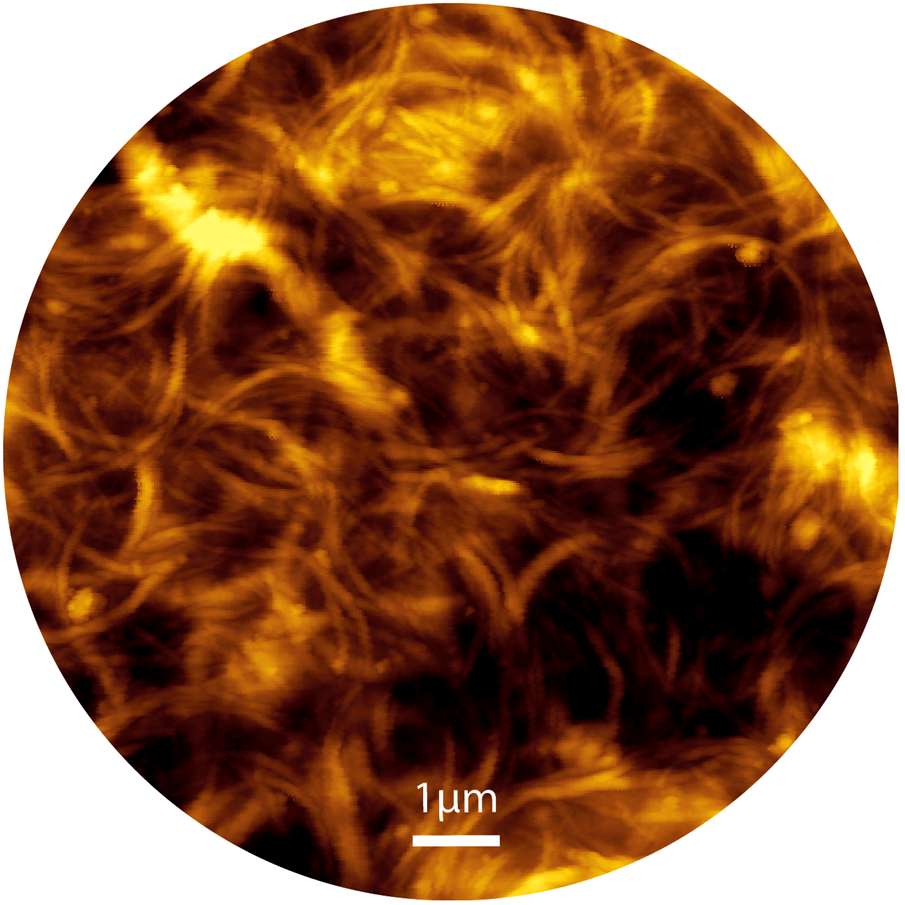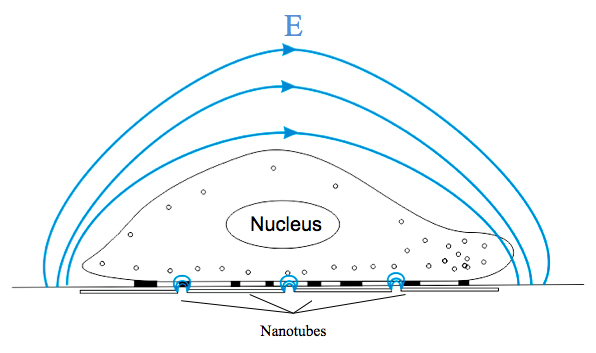Bio-nano-electronic interfaces

|
Introduction Biotechnology is developing rapidly worldwide, but still knew only few things about the operation principles of our brain. This raises the problem of diagnosing the state of the brain due to its isolated location and inaccessibility of this organ, which nature carefully provided with a strong outer cover. The use of external test equipment allows scientists to analyze indirect brain activity only, and does not give a complete understanding of how does it's separate elements communicate and function in a giant bio-network. To study the basic principles of brain function along with the fundamental laws of encoding, transmission and detection information, the research is conducted on the animal brain cells – neurons. First isolated from living tissue, and then propagated and grown in the laboratory, they are suitable for experiments outside the body (in vitro). Such studies can identify various effects of new drugs and the impact on the cells microenvironment. Understanding the physiological mechanisms of our brain through the study of the principles of neural networks in the future may solve incurable diseases, paralysis, cancer, chronic diseases, impaired motor skills and memory loss. |

|
Making connections One of the most exciting areas of neuroscience today is the integration of biological elements in traditional electronic elements to create a physiological environment sensors, monitoring the body state and for artificial implants development. This includes the formation of artificial relations between single neurons or neural networks and multielectrode systems. Ideally, such a system should provide non-invasive connections between neurons and electrodes, as the damage caused by the introduction of the electrode may affect the composition of intracellular fluid. In this case the signal ratio problem arises: extracellular stimulation signals reaches the units of volts, whereas the potential taken from the extracellular electrodes in the tens of microvolts. To solve this problem, measuring systems are packed with precise measuring equipment which is expensive. An alternative solution to this problem may be found through the development of devices that generate large local electric field. |
|
The Research At present, our research group is working on a system for recording the electrical activity of cells using carbon nanotubes. Carbon nanotubes – a unique material, geometrically similar to collagen fibers, the basis of connective tissue. We have previously shown that carbon nanotubes can promote cell proliferation [1,2], and can also be used as a scaffold material of damaged tissue areas regeneration [3]. In addition, due to its unique properties of conductivity, mechanical strength and tremendous flexibility, nanotubes are also very promising material for electronic components such as transistors and flexible displays [4]. The use of nanotubes for the registration and investigation of cellular activity is a relatively new scientific field, however, there are vast opportunities to use nanotubes to localize the electric field in the contact area of cells with electrodes, thereby reducing the dimensions of the measuring systems to the size of a mobile phone. Based on these biological systems, for example, one can build a control circuit for robots, which will be positioned in space by means of signals processed by a living neural network. If you compare such systems to artificial neural networks programmed by humans, it is clear that can the last can only very primitively simulate the brain activity, so you will get a huge loss in perfomance. |

|
In our experiments, we use rat neurons, which has all the same functions as the cells of the human brain. In theory, such systems have incredible potential for use as a microprocessor control unit that can be trained. Therefore, our main challenge in this case is to develop a new generation of hybrid interface between biological systems and electronics devices throught carbon nanotubes. For more information and/or any questions on this topic, please e-mail Dr. Ivan Bobrinetskiy bobrinet@mail.ru References: 1) Bobrinetskiy I.I., Morozov R.A., Podgaetskiy V.M., Simunin M.M., Yaminskiy I.V. A Study of Bulky Nanotube Composites Based on Albumin by High_Resolution Microscopy // Biophysics. -2011, Vol. 56, No. 2, pp. 194-199. 2) Bobrinetskiy I.I., Morozov R.A., Seleznev A.S., Podchernyaeva R.Y., Lopatina O.A. The prospects of using carbon nanotubes as a frame material engineered biological tissue paper // Cell transplantation and tissue engineering. - 2011 Vol. VI. 1. P. 85-90. 3) Bobrinetsky I.I., Morozov R.A., Seleznev A.S., Podchernyaeva R.Y, Lopatina O.A. Studies of proliferative activity and viability of the cells and fibroblasts in different types ofglioblastoma carbon nanotubes / / Bulletin of Experimental Biology and Medicine. - 2012 - T. 153. - № 2. - S. 227-232. 4) Bobrinetskiy I.I. Methods for parallel integration of carbon nanotubes during the formation of functional devices, microelectronics and sensor technology Microelectronics. - M.: 2009. - Volume 38. - № 5. - C. 353-360. |